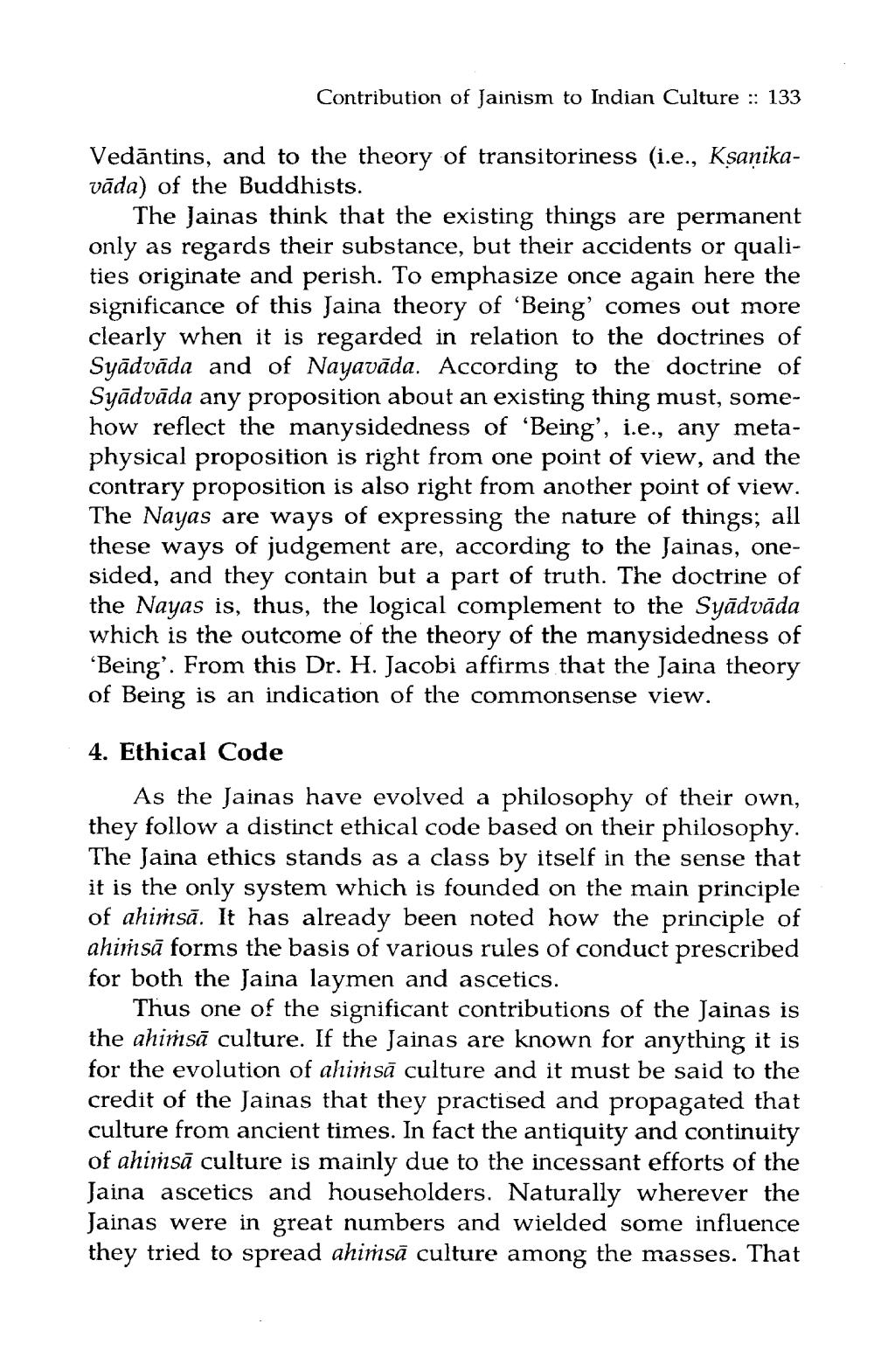________________
Contribution of Jainism to Indian Culture :: 133
Vedāntins, and to the theory of transitoriness (i.e., Ksaņikavāda) of the Buddhists.
The Jainas think that the existing things are permanent only as regards their substance, but their accidents or qualities originate and perish. To emphasize once again here the significance of this Jaina theory of 'Being' comes out more clearly when it is regarded in relation to the doctrines of Syādvāda and of Nayavāda. According to the doctrine of Syādvāda any proposition about an existing thing must, somehow reflect the manysidedness of 'Being', i.e., any metaphysical proposition is right from one point of view, and the contrary proposition is also right from another point of view. The Nayas are ways of expressing the nature of things; all these ways of judgement are, according to the Jainas, onesided, and they contain but a part of truth. The doctrine of the Nayas is, thus, the logical complement to the Syādvāda which is the outcome of the theory of the manysidedness of “Being'. From this Dr. H. Jacobi affirms that the Jaina theory of Being is an indication of the commonsense view.
4. Ethical Code
As the Jainas have evolved a philosophy of their own, they follow a distinct ethical code based on their philosophy. The Jaina ethics stands as a class by itself in the sense that it is the only system which is founded on the main principle of ahimsā. It has already been noted how the principle of ahimsā forms the basis of various rules of conduct prescribed for both the Jaina laymen and ascetics.
Thus one of the significant contributions of the Jainas is the ahimsā culture. If the Jainas are known for anything it is for the evolution of ahimsā culture and it must be said to the credit of the Jainas that they practised and propagated that culture from ancient times. In fact the antiquity and continuity of ahimsā culture is mainly due to the incessant efforts of the Jaina ascetics and householders. Naturally wherever the Jainas were in great numbers and wielded some influence they tried to spread ahimsā culture among the masses. That




